![]()
![]()
![]()
Use LEFT and RIGHT arrow keys to navigate between flashcards;
Use UP and DOWN arrow keys to flip the card;
H to show hint;
A reads text to speech;
117 Cards in this Set
- Front
- Back
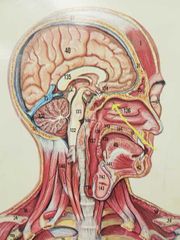
|
Superior Nasal Conchae |
|
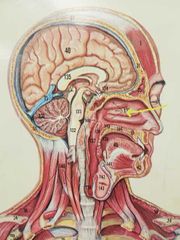
|
Middle Nasal Conchae |
|
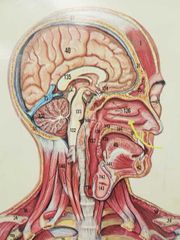
|
Inferior Nasal Conchae |
|
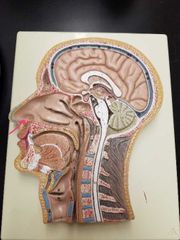
|
External nares |
|
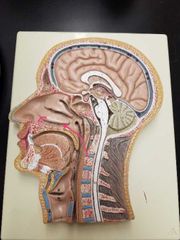
|
Inferior Nasal Meatus |
|
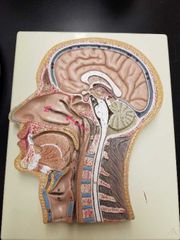
|
Middle Nasal Meatus |
|

|
Septal cartilage |
|
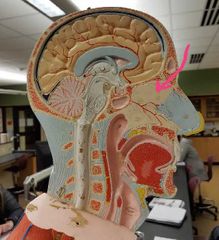
|
Perpendicular plate of the ethmoid bone |
|

|
Vomer |
|
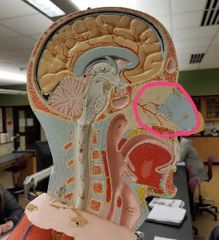
|
Nasal septum |
|
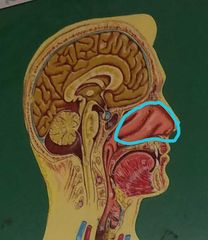
|
Nasal cavity |
|

|
Hard palate |
|
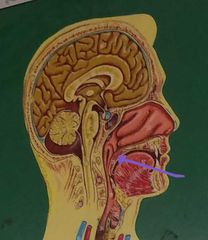
|
Soft palate |
|
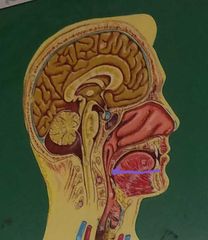
|
Uvula |
|

|
Internal nares |
|
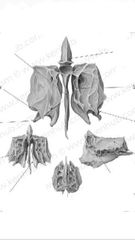
|
Ethmoid bone |
|
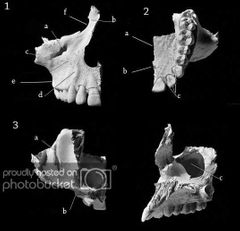
|
Maxilla |
|
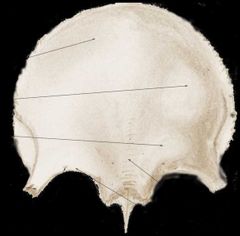
|
Frontal bone |
|
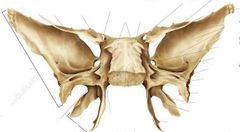
|
Sphenoid bone |
|
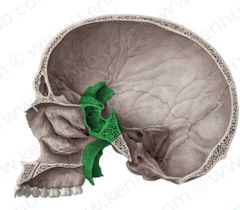
|
Sphenoid bone |
|
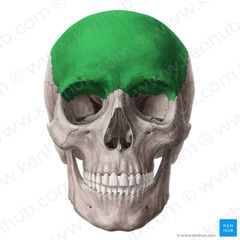
|
Frontal bone |
|
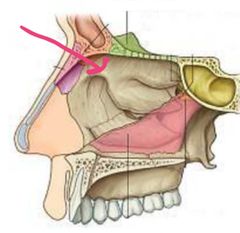
|
Ethmoid bone |
|
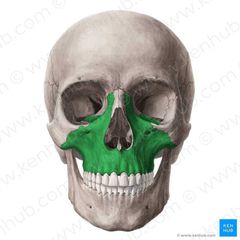
|
Maxilla |
|
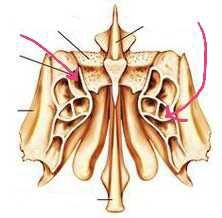
|
Ethmoid sinuses |
|
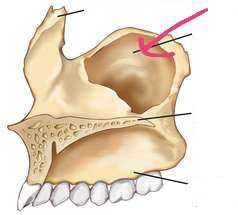
|
Maxillary sinus |
|

|
Sphenoid Sinuses |
|
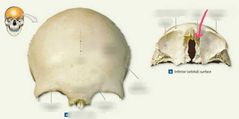
|
Frontal sinus |
|
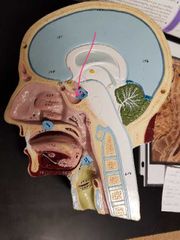
|
Sphenoid sinus |
|
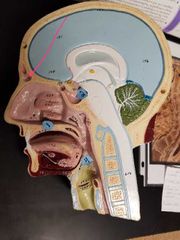
|
Frontal sinus |
|
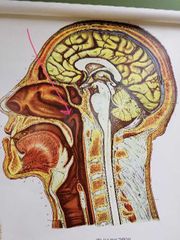
|
Internal nares |
|
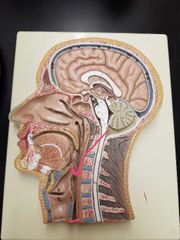
|
Laryngopharynx |
|
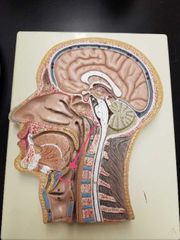
|
Epiglottis |
|
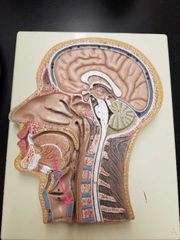
|
Cricoid cartilage |
|
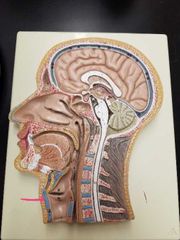
|
Thyroid cartilage |
|
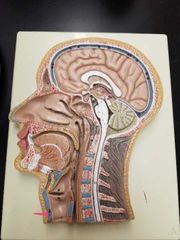
|
Cricoid cartilage |
|

|
Oropharynx |
|
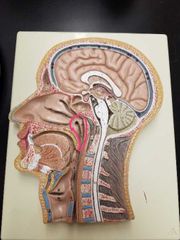
|
Nasopharynx |
|
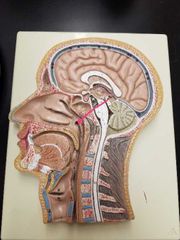
|
Auditory tube opening |
|
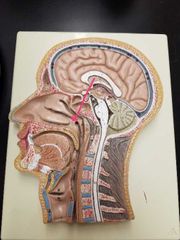
|
Internal nare |
|

|
Lingual tonsil |
|
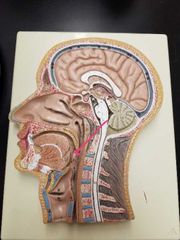
|
Palatine tonsils |
|
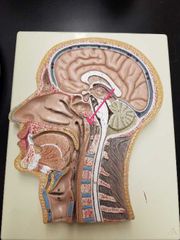
|
Pharyngeal tonsils |
|
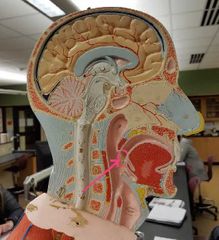
|
Palatine tonsil |
|
|
Adenoids |
Inflamed pharyngeal tonsils |
|
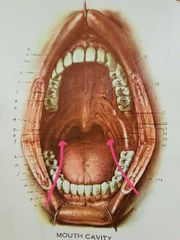
|
Palatine tonsils |
|
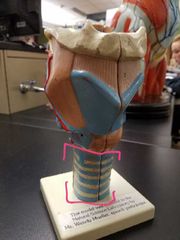
|
Trachea |
|
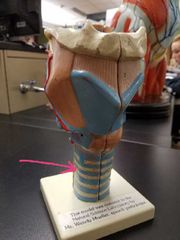
|
Tracheal cartilage |
|
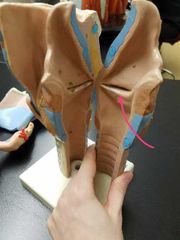
|
True vocal chords |
|
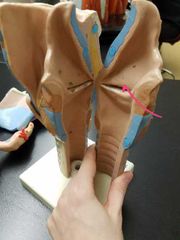
|
False vocal chords |
|
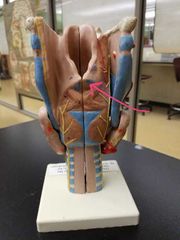
|
Arytenoid cartilage |
|
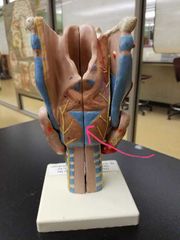
|
Cricoid cartilage |
|
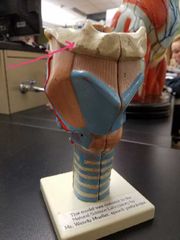
|
Hyoid bone |
|
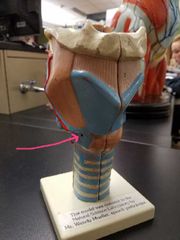
|
Cricoid cartilage |
|
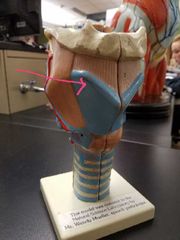
|
Thyroid cartilage |
|
|
The opening between the true vocal chords? |
Glottis |
|
|
How can you tell the difference between tertiary bronchi and bronchioles? |
Bronchioles have no cartilage |
|
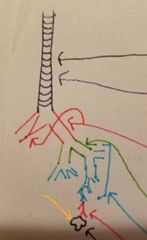
|
Alveoli |
|
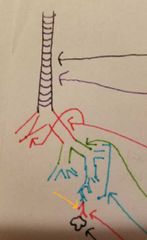
|
Bronchioles |
|

|
Tertiary bronchi |
|
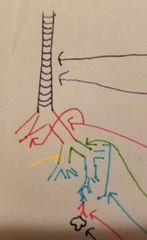
|
Secondary bronchi |
|

|
Primary bronchi |
|

|
Trachea |
|
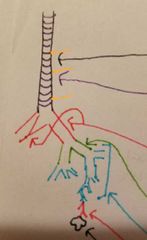
|
Tracheal cartilage |
|
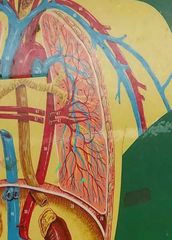
|
Bronchioles |
|
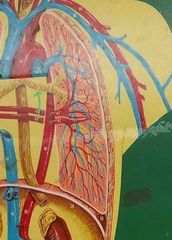
|
Left primary bronchi |
|
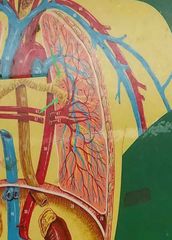
|
Secondary bronchi |
|

|
Tertiary bronchi |
|
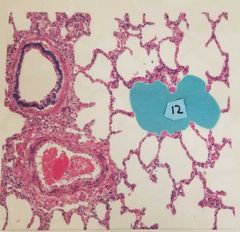
|
Alveolar sacs |
|

|
Anthracosis |
|
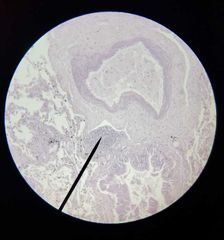
|
Tuberculosis |
|
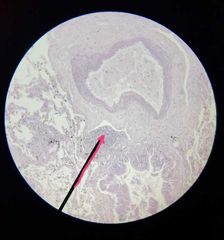
|
Granuloma |
|

|
Emphysema |
|
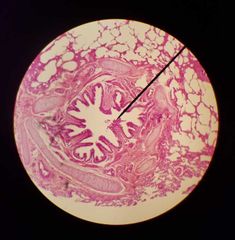
|
Bronchus |
|
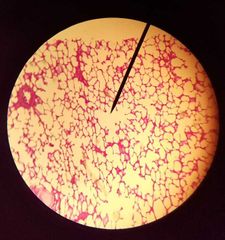
|
Alveolar sac |
|
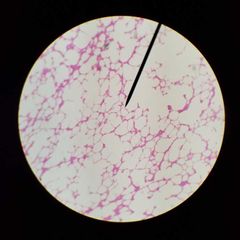
|
Alveoli |
|
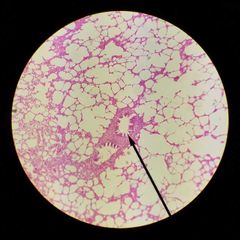
|
Bronchiole |
|
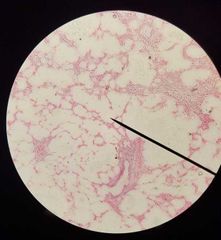
|
Alveolar duct |
|
|
Type of tissue: bronchi |
Pseudostratified ciliated columnar epithelium |
|
|
Type of tissue: bronchiole |
Simple cuboidal epithelium |
|
|
Type of tissue: alveolar ducts |
Simple squamous epithelium |
|
|
Type of tissue: alveolar sacs |
Simple squamous epithelium |
|
|
Type of tissue: alveoli |
Simple squamous epithelium |
|
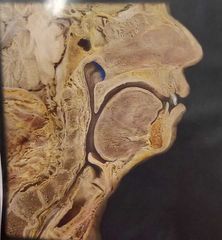
|
Internal nares |
|
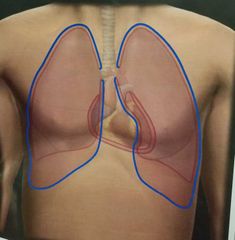
|
Parietal pleura |
|

|
Laryngopharynx |
|
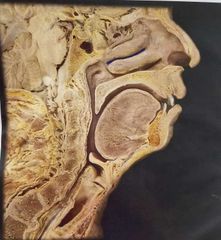
|
Middle Nasal Meatus |
|
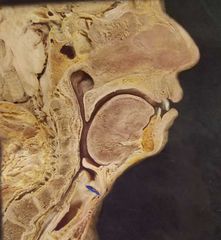
|
True vocal chords |
|

|
Middle Nasal Concha |
|
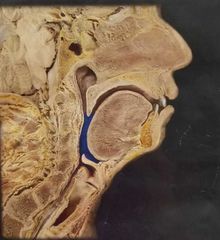
|
Oropharynx |
|
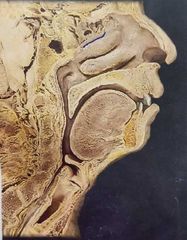
|
Superior Nasal Meatus |
|
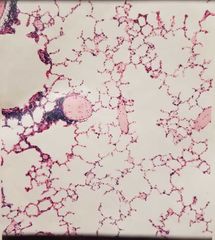
|
Lung |
|
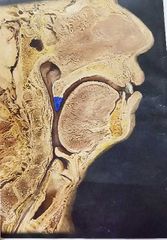
|
Uvula |
|
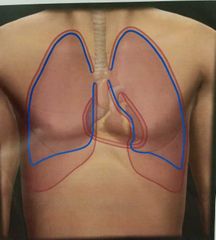
|
Visceral pleura |
|

|
Superior lobe of the right lung |
|

|
Inferior lobe of left lung |
|
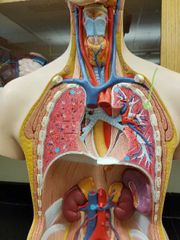
|
Superior lobe of left lung |
|

|
Inferior lobe of right lung |
|

|
Middle lobe of the right lung |
|
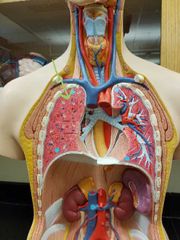
|
Superior lobe of the right lung |
|
|
Pleural cavity |
Space between parietal and visceral pleura |
|
|
Muscles involved in normal breathing |
Diaphragm |
|
|
Muscles involved in forced inspiration |
1. External intercostals 2. Serratus anterior 3. Sternocleidomastoid 4. Pectoralis minor 5. Diaphragm |
|
|
Muscles involved in forced expiration |
1. Internal intercostals 2. Rectus abdominis 3. External oblique 4. Internal oblique 5. Transverse abdominis |
|
|
Spirometer |
Instrument used to measure volumes of air exchanged in breathing |
|
|
Tidal volume (TV) |
The amount of air breathed in or out with a normal breathe |
|
|
Normal TV? |
500cc |
|
|
Inspiratory reserve volume (IRV) |
The amount of additional air taken in with a deep breathe (after tidal volume) |
|
|
Normal IRV? |
3,000cc |
|
|
Expiratory reserve volume (ERV) |
The amount of air life out of the lungs with a forced expiration (after tidal volume) |
|
|
Normal ERV? |
1,100cc |
|
|
Vital capacity (VC) |
VC= TV+ IRV + ERV |
|
|
Normal VC? |
4,600cc |
|
|
Residual volume (RV) |
The amount of air that remains in the lungs after a forced expiration. Keeps the lungs inflated/ alveoli open |
|
|
Normal RV? |
1,200cc |
|
|
Minute ventilation |
The amount of air moved into and out of the lungs per minute TV • Respiratory Rate |
|
|
Respiratory rate |
Breathes per minute |
|
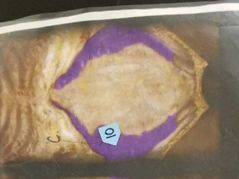
|
Transverse abdominis |

